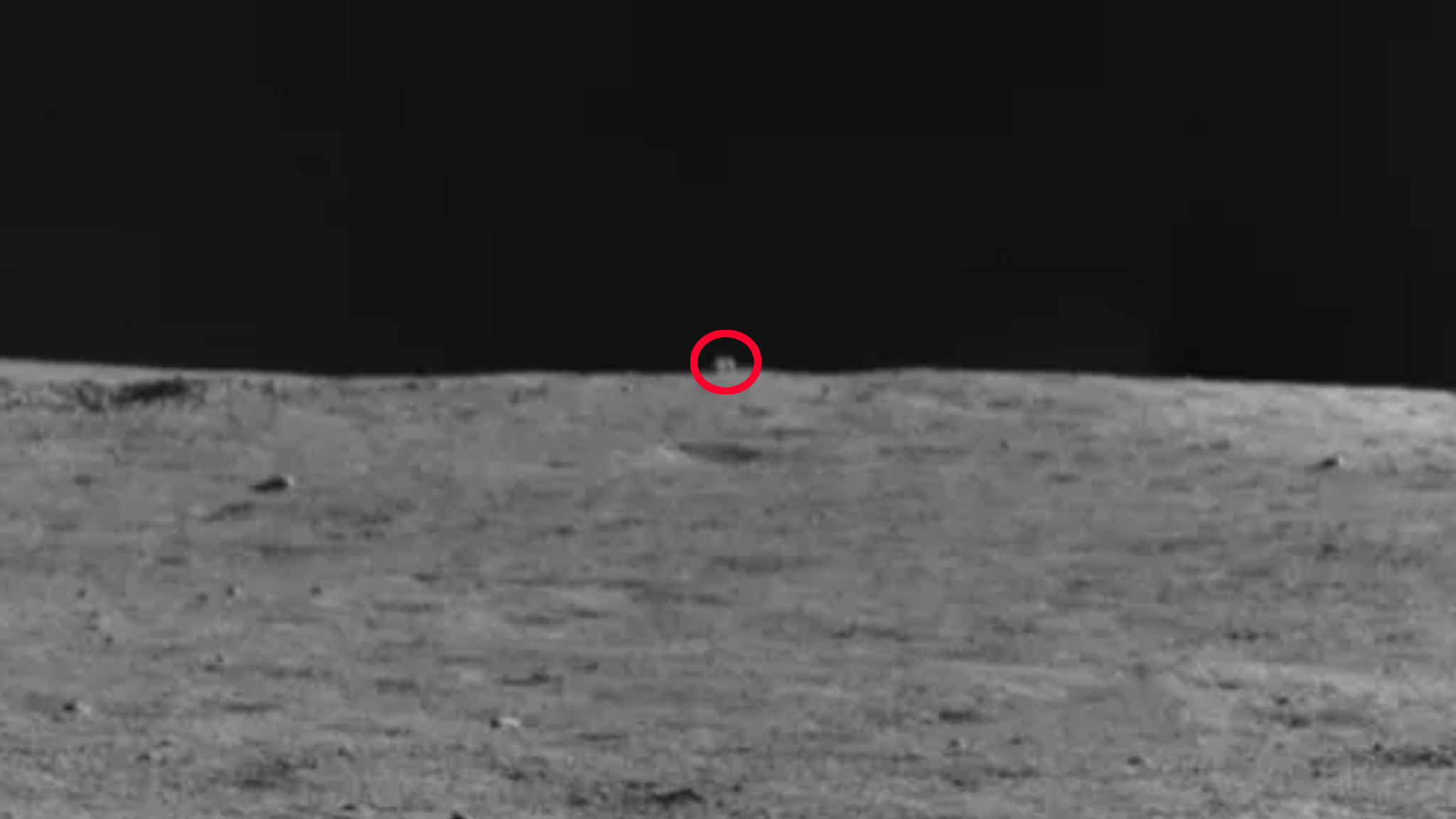Mystery 'moon hut' is actually an adorable rabbit-shaped rock
When China's lunar rover first discovered it, the rock appeared cube-shaped.

A mysterious "moon hut" spotted by China's lunar Yutu 2 rover is actually … an adorable rabbit-shaped rock.
The rock has been nicknamed "jade rabbit" by the Yutu 2 team, which announced its rover's closer inspection of the object on Friday (Jan. 7). The nickname is apt, as the rover's name, Yutu, also translates to "jade rabbit."
The object first appeared in the field of view of Yutu 2's cameras in December, when it looked like a cube-shaped blur on the horizon. The rover is the first to explore the moon's far side, which always faces away from Earth and is more rugged and pitted by craters than the moon's near side. Because the object appeared irregularly symmetrical, with a strange flat top, researchers with the China National Space Administration outreach program Our Space joked that it might be the hut of alien pioneers, Live Science previously reported.
After a month-long traverse of the distance from the original spot where it snapped the "moon hut" image to the site of the object itself, the rover has now sent close-ups back to Earth. It turns out that the rock is much smaller than it appeared to be from afar. It's also much rounder and cuter. In fact, it looks a lot like a crouched bunny munching on a couple of carrots (which are actually smaller rocks). Some observers, like CNET's Amanda Kooser, even see bunny poop in a couple of round pebbles near the rock's other end.
"The Moon's surface is 38 million square kilometres of rocks, so it would have been astronomically exceptional for it to be anything else," space journalist Andrew Jones wrote on Twitter. "But while small, the jade rabbit/玉兔 rock will also be a monumental disappointment to some."
Because of the lack of perspective in the original image, Jones wrote, many people were hoping for a large structure that looked more like the Arc de Triomphe or Beijing's towering CCTV headquarters building.
With the bunny rock cataloged, Yutu 2 will now continue its exploration of the 115-mile-wide (186 kilometers) Von Kármán crater. The rover has been exploring the region since the spacecraft Chang'e 4 delivered it to the lunar surface in the first-ever soft landing on the far side of the moon in January 2019. The rover is the longest-lasting to ever explore the moon's surface. It has explored the porous soil that makes up at least the top 130 feet (40 m) of the moon's surface and investigated a strange-colored gel-like substance found in a crater. It turned out to be melted-together rock caused by a long-ago meteorite impact, a 2020 study found.
Get the world’s most fascinating discoveries delivered straight to your inbox.
Originally published on Live Science.

Stephanie Pappas is a contributing writer for Live Science, covering topics ranging from geoscience to archaeology to the human brain and behavior. She was previously a senior writer for Live Science but is now a freelancer based in Denver, Colorado, and regularly contributes to Scientific American and The Monitor, the monthly magazine of the American Psychological Association. Stephanie received a bachelor's degree in psychology from the University of South Carolina and a graduate certificate in science communication from the University of California, Santa Cruz.


